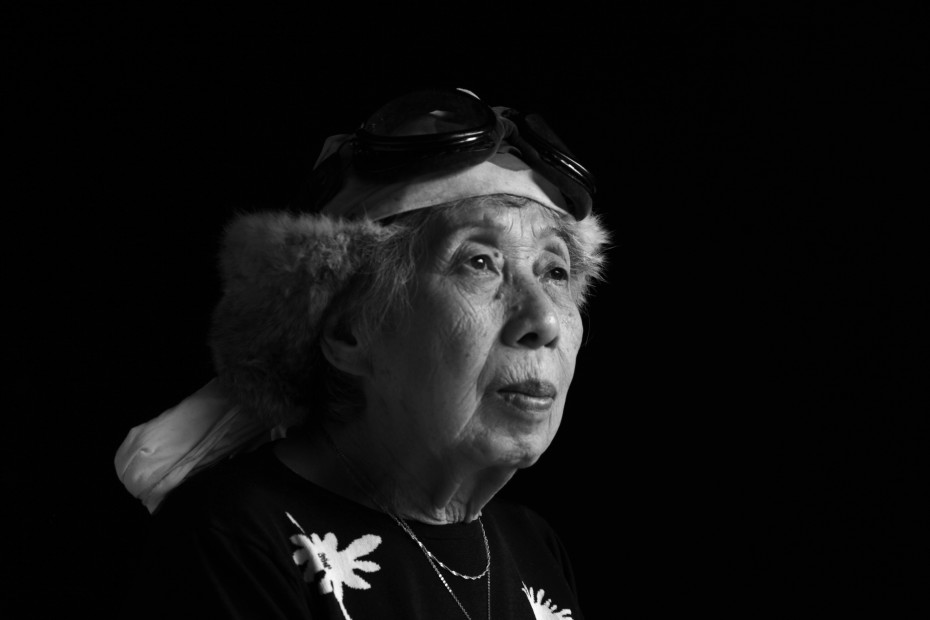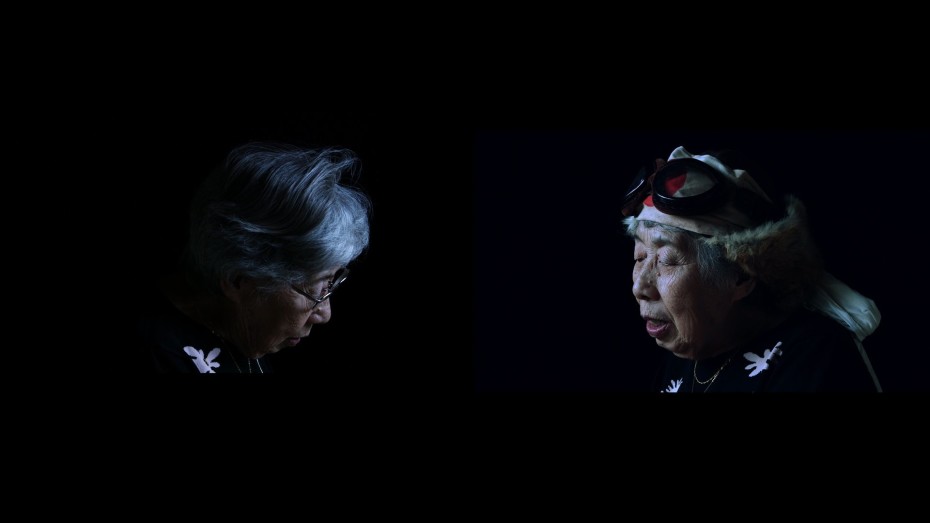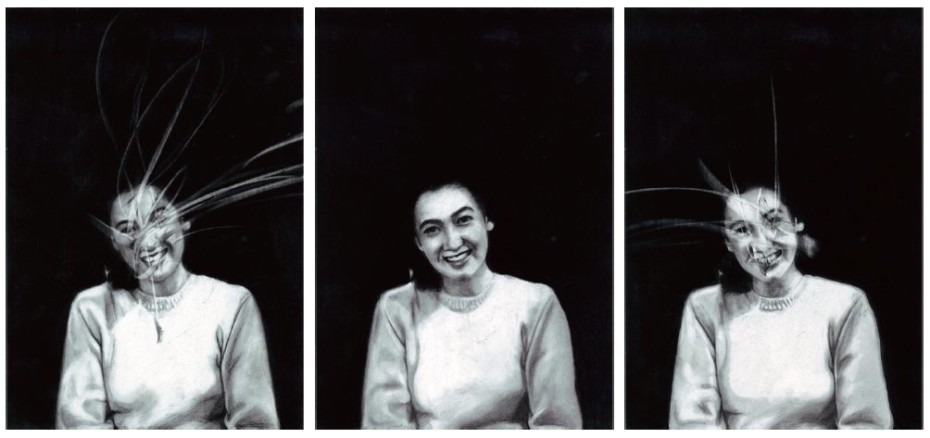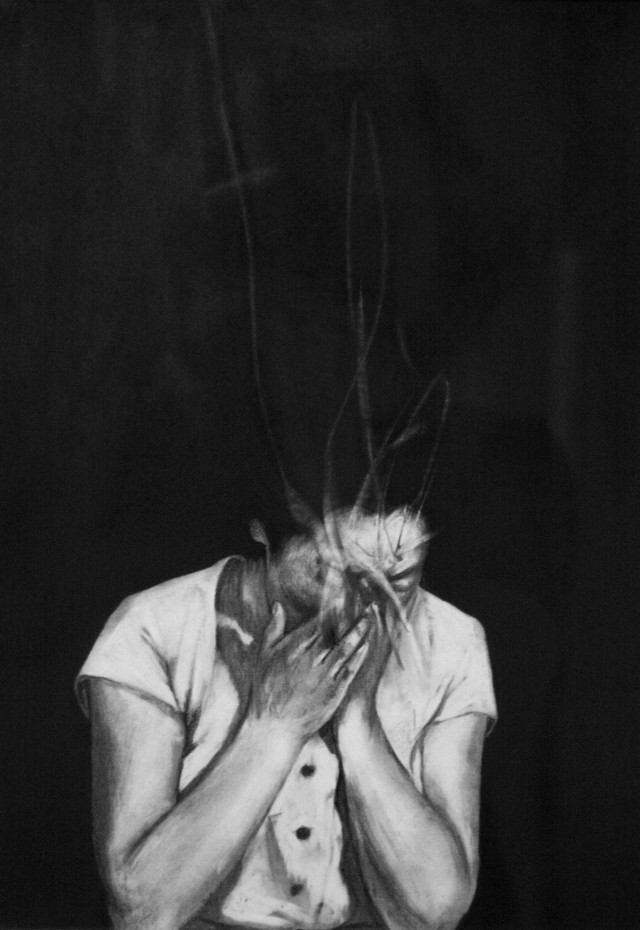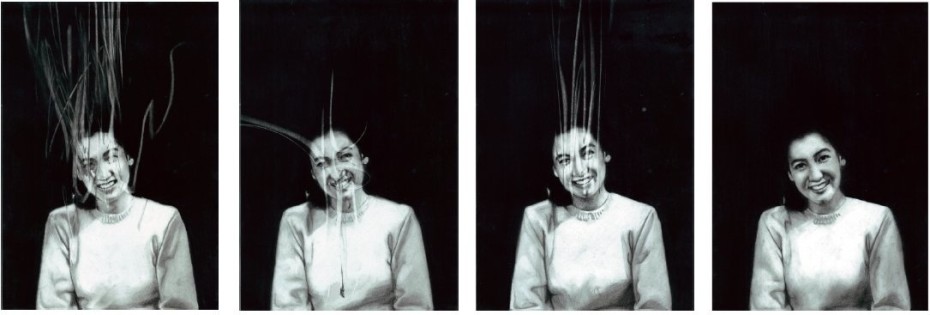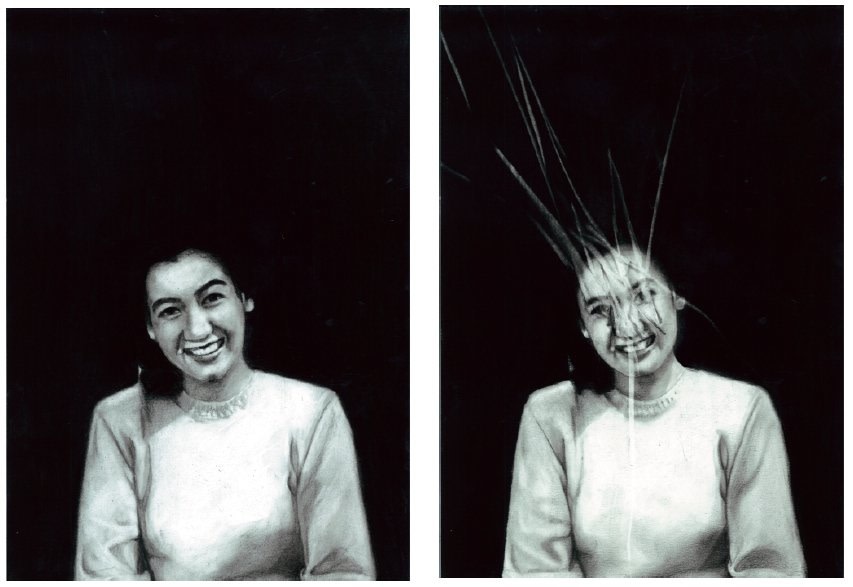Press Release
08.03 - 12.04.2014
Meiro Koizumi
Double Projection
Annet Gelink Gallery proudly presents Double Projection, the third solo exhibition of Meiro Koizumi at the gallery. The show takes its name from the two video works on show, Double Projection #1 (Where the Silence Fails) and Double Projection #2 (When Her Prayer was Heard), which focus on the iconic figure of the kamikaze pilot. For Koizumi, this figure offers the possibility to not only investigate the theme of Japan's national identity, specifically its problematic post-War evolution, but also forms a means through which to resolve it.
Koizumi's oeuvre consists of layered, often confrontational and subversive works. The majority of his (video) works have an implicit duality, being both tragic and comically absurd, as well as exploiting and manipulating the emotions at stake. This exploration of melodrama and the use of duality is a central to his artistic practice, especially in the mediums of film and performance.
In the two Double Projection videos on show, Koizumi confronts us with the duality of the kamikaze figure. Should we consider them as victims of their time, unable to counter the tide of nationalism that reigned during WWII? Or do we rather see them as men who willingly gave their life for national pride? And what, in the end, does our judgement mean?
Koizumi's exploration into the nature of duality and its heightened effect in film, takes on more subtle and alienating characteristics in Double Projection #1 and #2. He gives us multiple sides: the story of a 'failed' kamikaze pilot and that of a woman who lost her boyfriend through a failed mission. The feeling of failure and especially of having failed their partners, whether romantic or in battle, has not left either of them. Koizumi though does not plainly give them the opportunity to tell their story, but rather warps and plays with the audience's emotions and experience of the narrative.
The exhibition continues in the Bakery, where drawings by Koizumi are on show. These works have at their basis the artist's quest to find a method that enables him to create psychological/spiritual images in an automatic manner. Koizumi uses the figure of Setsuko Hara, a popular Japanese actress from the 1940s and 50s. His attempts, to instantaneously transform her image into psychological/spiritual drawings, reveal the layers hidden beneath the surface of her performances.
Spirituality, and especially the formal rituals associated with it, runs through Japanese culture as a guiding principle. Both in the video works and the drawings, Koizumi tries to unhinge the Japanese leaning to formal spiritualism and lay bare the emotional and psychological states that remain masked. Though the works on view in Double Projection serve as an investigation into Japanese identity and nationality, Koizumi's works have a universally human message too. If emotions as powerful and defining as pride, shame and compassion can be so easily manipulated, should we ever trust them? Koizumi does not give us an easy answer. Rather he hands us an ambiguous reality and the thrilling opportunity to free ourselves from context and background, and decide for ourselves.
Meiro Koizumi attended the International Christian University, Tokyo and the Chelsea College of Art and Design, London as well as the Rijksakademie van Beeldende Kunsten, Amsterdam. Recent solo exhibitions include shows at the Museum of Modern Art in New York, Centro de Art Caja de Burgos in Spain, KLEMM's projectroom 7d5e, Berlin, and the Mori Art Museum in Tokyo. Upcoming projects include shows at the Kunstpalais in Erlangen, Tokyo Opera City Art Gallery and at the Museum of Fine Arts, Houston (TX). His work is part of internationally renowned collections such as that of the Museum of Modern art in New York, Kadist Art Foundation, Museum Booijmans van Beuningen, Stedelijk Museum Amsterdam, De Hallen Haarlem, The Museum of Contemporary Art Tokyo and Centro de Arte Caja de Burgos. He also won the People's Choice Award of the Future Generation Art Prize 2012.

